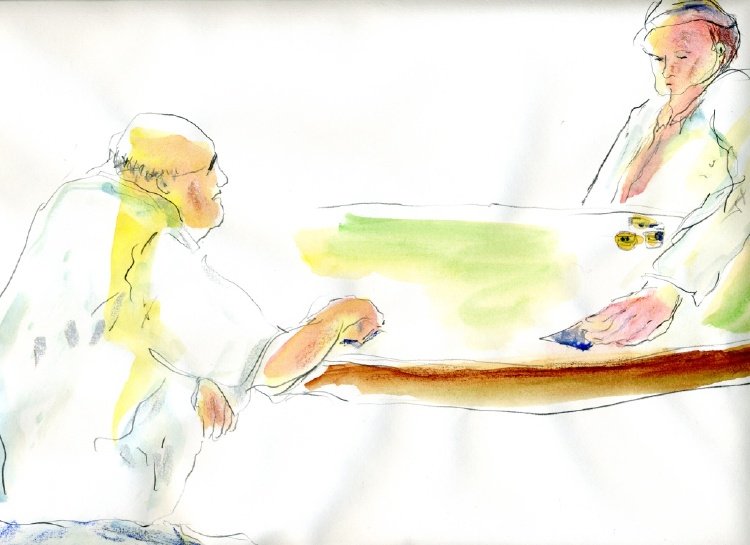Body Language
Body Language
In much of her work, Jan Wurm portrays humans partaking in unpleasant activities, and her art fits in style the messages it conveys. The hyper-realism of the strong man’s distorted proportions show the disassociation between Wurm’s vision of the ideal and her view of his occupation. The ticket seller’s booth, bathed in the dull monotone red of neon lights, reflects both the falsity of the carnival and the bored melancholy of a woman who would rather be somewhere else.
The minimalist white void that surrounds Wurm’s characters serves to amplify the presence of their props. This turns the boxer’s gloves’ red into more than just a standard—it’s pinpointed, targeted, made into a symbol of blood and all the dark aspects of the profession. This turns the viewer’s attention to that single solid object that controls the gambler’s life, the card table. This brings to plain sight that which enthralls—and haunts—the characters, and the void on its own reflects the solitude they subject themselves to.
Wurm’s final message—conveyed through her character’s body language—is one of self- causation. Her characters cross their arms, warding off interaction, sealing themselves in their cages of discontent. The gambler keeps his grimace and hand glued to the table, not letting it go lest he find something better. Even the victor in the boxing matches can’t wear a smile as keeps his arms as close to his chest as he can. Wurm draws her characters in pitiable situations and depicts them as lost cases, their inability to open up apparent through their stances and expressions. In this manner, Wurm’s art conveys its message regarding the various activities these characters are engaged in.
Michael Pruess



















